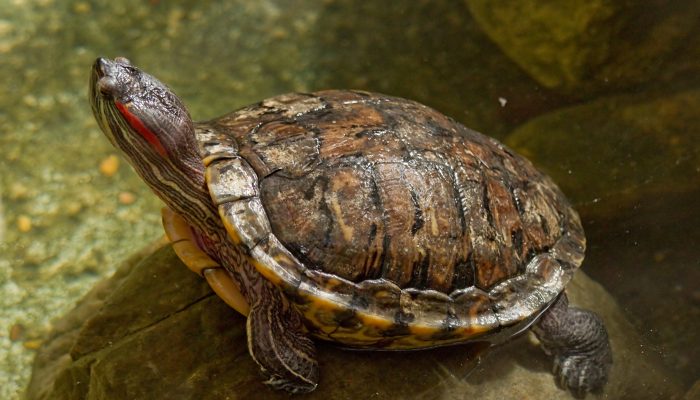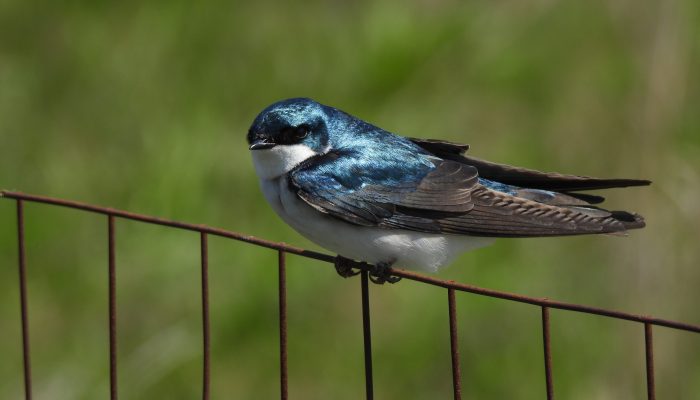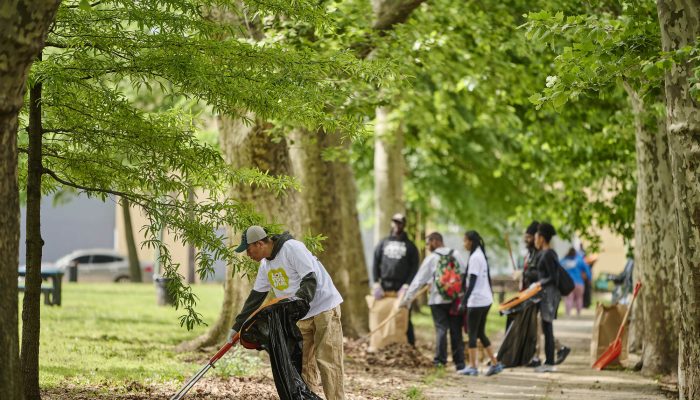Guest post by Bernard S. Brown, Philadelphia County Coordinator, PA Amphibian And Reptile Survey
Most turtles you see catching some rays on rocks in Philadelphia’s waterways are red-eared sliders. Look closely, and you’ll see the red stripes on their heads (though really old ones lose their stripes). They are extremely flexible turtles, equally at home in a pond like Concourse Lake or in the Delaware River. The problem is, they are not native to Pennsylvania. They are competing with many of our native turtles for habitat and food, including the threatened red-bellied turtle.
Not from here
Red-eared sliders are native to the southern United States and northern Mexico, but they now live throughout Pennsylvania, and all over the world. So how did they get here, and what can you do to keep them from becoming a bigger problem?
Little pets grow into big problems
It all starts with a cute, green turtle the size of a silver dollar with red stripes on the side of its head. They’re sold as pets. Maybe you have seen them being sold somewhere in little plastic containers. It seems like the turtle could live just fine in that little plastic container. Then you take it home and, if it doesn’t die right away, it gets bigger. And bigger… and bigger. You try to keep up by putting it in larger aquariums. You feed it more, but then it just poops more, and the murky water in the aquarium stinks up your room.
Here’s what many people don’t know when they take a tiny red-eared slider home. These little pets:
- grow to be a foot long
- require an enormous aquarium when full grown
- can live for forty years.
Like many unwitting owners of a red-eared slider, you could be forgiven for just dumping the thing in the river and walking away.
Odds are, a dumped turtle will die soon. It’s hard for a turtle to survive in a new place. It doesn’t know where to find food, or the best spots to hibernate through the winter, or where to hide from raccoons, otters, and all sorts of other things that will try to kill it.
A few dumped turtles make it though. They end up doing what comes naturally… producing more sliders. That’s how we’ve ended up with the problem in Pennsylvania. At this point, it would be very difficult to get rid of the invasive red-eared sliders in our area.

How you can help
Here are some ways that you can help the problem from getting any worse:
- Don’t buy baby turtles. It’s illegal.
- Don’t release any captive animal into the wild. If you have a turtle you can’t keep any longer, please find it a home with another human.
- If you are desperate to get a turtle, adopt one. There is always someone trying to adopt out an adult slider.
Tell us about turtles!
If you spot a turtle this fall, take a quick photo and report it to the Pennsylvania Amphibian and Reptile Survey (PARS). Your observation will help future researchers and conservationists interested in our local critters!




